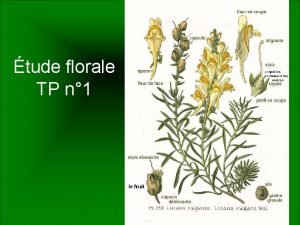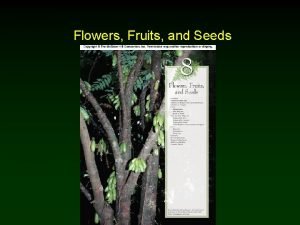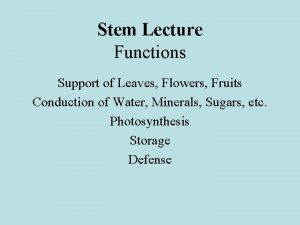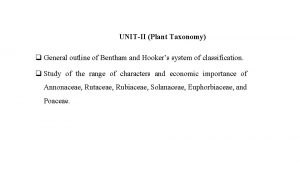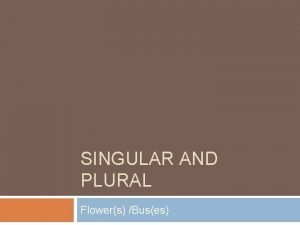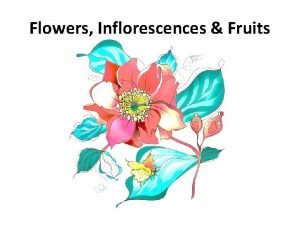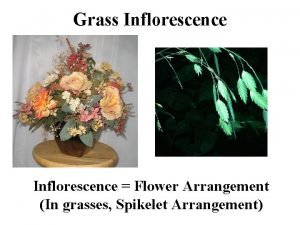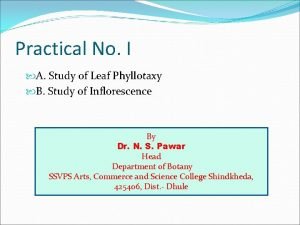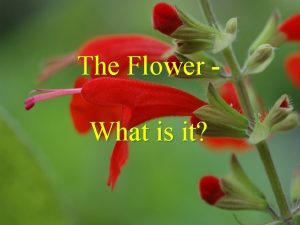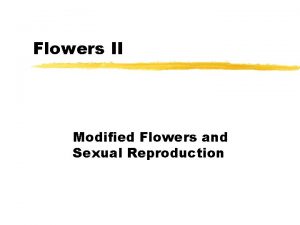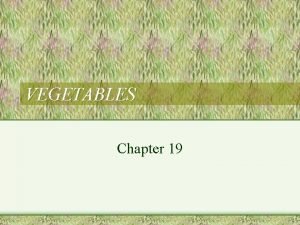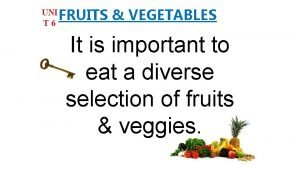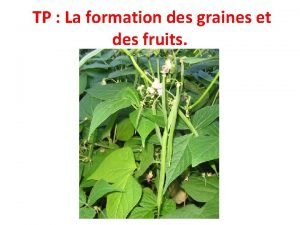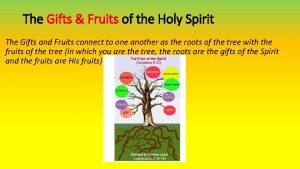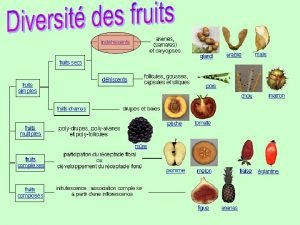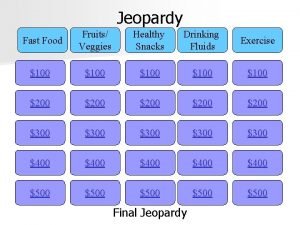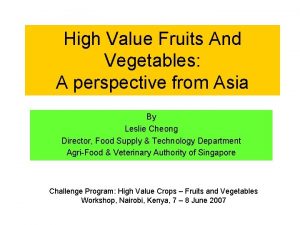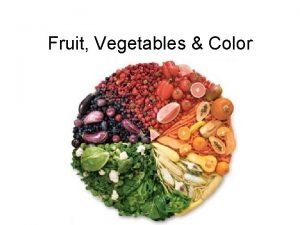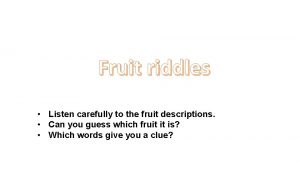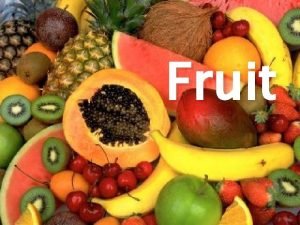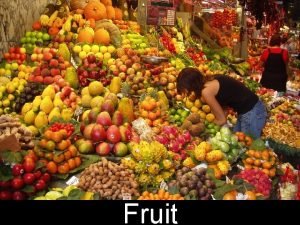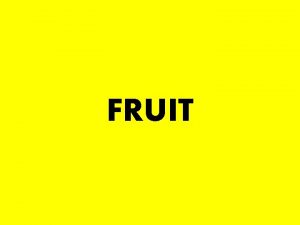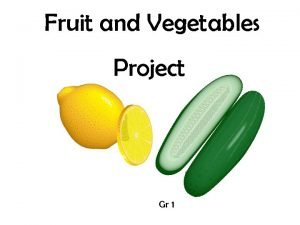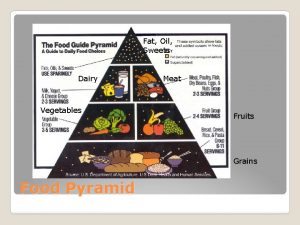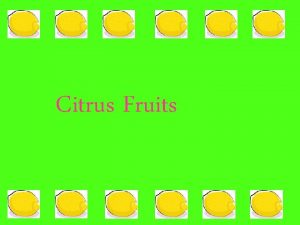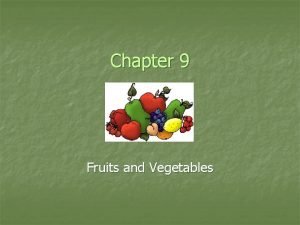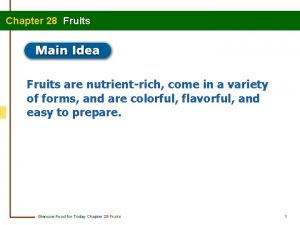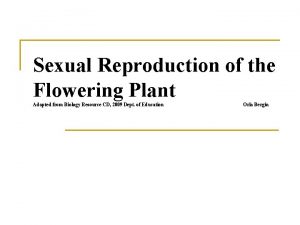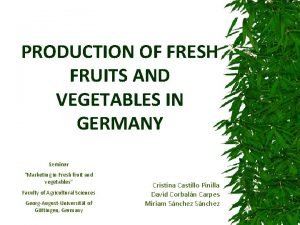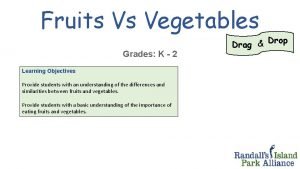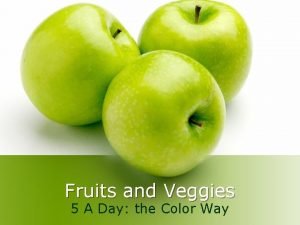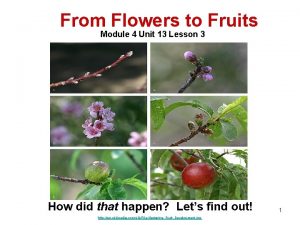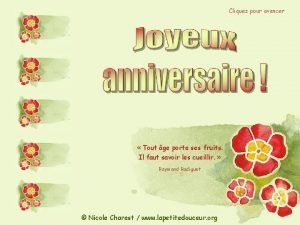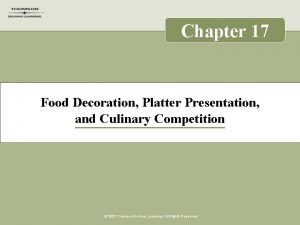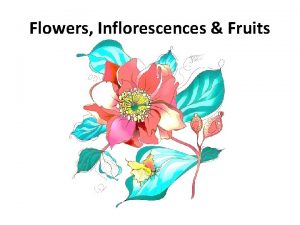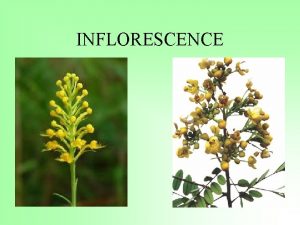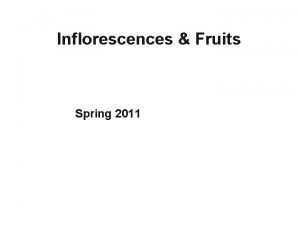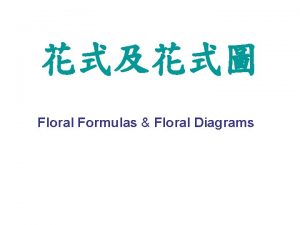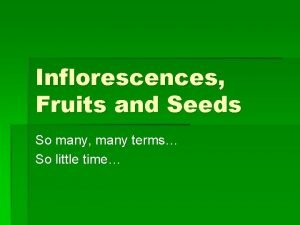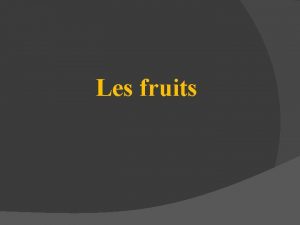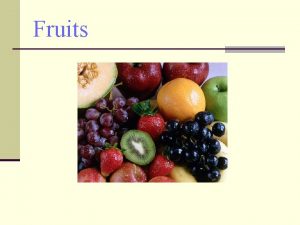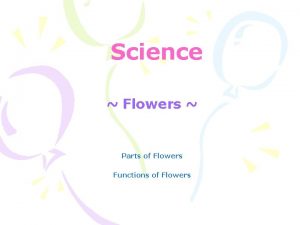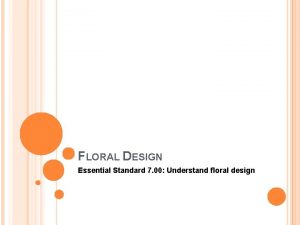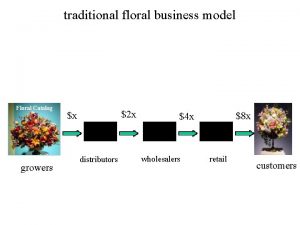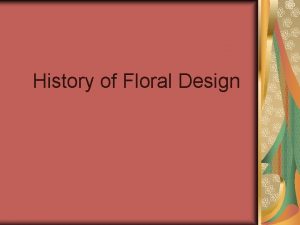Flowers Inflorescences Fruits Flowers Inflorescence Fruits Floral characteristics






















































- Slides: 54

Flowers, Inflorescences & Fruits

Flowers, Inflorescence & Fruits • Floral characteristics are the most commonly features to identify plants • Much more reliable than vegetative characteristics

Flower • A typical flower is a stem tip bearing two whorls of appendages that are sterile and two that are fertile • All four whorls are considered to be modified leaves

Flower • Typical flower – 4 main parts

Flower • Sterile parts – Sepals: protect flower bud • All sepals called calyx – Petals: pretty parts that attract pollinators • All petals called corolla – Calyx and corolla make up the perianth

Flower • Fertile parts – Stamens • Male reproductive structures – Anther – Filaments – All stamens called androecium

Flower • Fertile parts – Carpel • Stigma • Style • Ovary – All carpels called the gynoecium

Presence or Absence of Parts Terms Applied to Individual Flowers • Complete: has all the floral parts – – Sepals Petals Stamens Carpels

Presence or Absence of Parts Terms Applied to Individual Flowers • Incomplete: missing one of more of the floral parts Ginger flower missing petals

Presence or Absence of Parts Terms Applied to Individual Flowers • Perfect (=bisexual): flower with both stamens and carpels Grape flower with stamens and carpels

Presence or Absence of Parts Terms Applied to Individual Flowers • Imperfect (=unisexual): missing stamens or carpels, but not both

Presence or Absence of Parts Terms Applied to Individual Flowers • Staminate (=male): unisexual flower with just stamens present Imperfect staminate flower; stamens only, no carples

Presence or Absence of Parts Terms Applied to Individual Flowers • Carpellate (=female): unisexual flower just carpels present Imperfect carpellate flower; carpel only; no stamens

Presence or Absence of Parts Terms Applied to Plants with Imperfect Flowers • Monoecious: any plant that has both staminate and carpellate flowers

Presence or Absence of Parts Terms Applied to Plants with Imperfect Flowers • Dioecious: plant that has either staminate flowers or carpellate flowers, but not both

Insertion of Floral Parts • The position of the gynoecium in relation to all the other floral parts is the basis for the terminology used in keys and taxonomic descriptions

Insertion of Floral Parts • Hypogynous: the sepals, petals, and stamens are inserted under the carpel – Ovary is said to be superior

Insertion of Floral Parts • In a perigynous flower, the sepal, petals, and stamens are fused together to form a cup called the hypanthium – The gynoecium sits inside the cup but is not fused to it – Ovary is said to be superior

Insertion of Floral Parts • In a epigynousflower, the sepals, petals, and stamens arise from a point above the ovary – Ovary is said to be inferior

Floral Symmetry • Actinomorphic (=radial): cutting the flower in any pane produces a mirror image

Floral Symmetry • Zygomorphic (=bilateral): can cut the flower in only one plane to get a mirror image

Inflorescence Types • An inflorescence is an arrangement of one or more flowers on a floral axis

Inflorescence Types • Inflorescence type determined by: – Number of flowers – Positional relationships – Degree of the development of their pedicels – Nature of their branching pattern

Simple Inflorescences • Terminal: flower at the tip of a stem Scarlet rose-mallow (Hibiscus coccineus)

Compound Inflorescences • Two or more flowers per inflorescence

Compound Inflorescences • Spike: elongate inflorescence; flowers are sessile, dense, or remote from one another Spiked blazing star (Liatris spicata)

Compound Inflorescences • Catkin: a pendant or erect inflorescence in which unisexual flowers lack petals and are hidden by scaly bracts

Compound Inflorescences • Raceme: an elongate inflorescence of pedicellate flowers on an unbranched rachis

Compound Inflorescences • Umbel: a flat-topped or somewhat rounded inflorescence in which all of the pedicels arise from a common point at the tip of the peduncle Butterfly weed (Asclepias sp. )

Compound Inflorescences • Corymb: a flat-topped or somewhat rounded inflorescence in which the pedicels of varying length are inserted along the rachis

Compound Inflorescences • Panicle: a muchbranched inflorescence with a central rachis which bears branches which are themselves branched

Fruits • Ripened or mature ovary • Contains seeds

Fruit Types • Dry fruits – Indehiscent – Dehiscent • Fleshy fruits – True fruits – False fruits

Fruit Types Dry, Indehiscent • Achene Sunflower (Helianthus sp. )

Fruit Types Dry, Indehiscent • Caryopsis (=grain)

Fruit Types Dry, Indehiscent • Samara Maple (Acer sp. )

Fruit Types Dry, Indehiscent • Schizocarp

Fruit Types Dry, Dehiscent • Capsule Mexican buckeye (Ungnadia speciosa)

Fruit Types Dry, Dehiscent • Silique

Fruit Types Dry, Dehiscent • Legume

Fruit Types Dry, Dehiscent • Loment

Fruit Types Dry, Dehiscent • Follicle

Fleshy Fruits True Fruits • Derived from a gynoecium of a single flower

Fleshy Fruits True Fruits • Drupe

Fleshy Fruits True Fruits • Berry

Fleshy Fruits True Fruits • Pepo Stink gourd (Cucurbita foetidissima)

Fleshy Fruits True Fruits • Pome

Fleshy Fruits True Fruits • Hesperidium

Fleshy Fruits False Fruits • Fruit derived from parts other than the gynoecium

Fleshy Fruits False Fruits • Accessory: fruit from the receptacle

Fleshy Fruits False Fruits • Aggregate: fruit formed from many separate flowers Magnolia (Magnolia sp. )

Fleshy Fruits False Fruits • Multiple: fruits formed by the fusion of an entire inflorescence

Fleshy Fruits False Fruits • Syconium: a hollow, vase-like inflorescence with the flowers lining the inside

BREAK
 Inflorescence en épi
Inflorescence en épi Rachis in flower
Rachis in flower Monocot fruits vs. dicot fruits
Monocot fruits vs. dicot fruits Support the leaves fruits and flowers
Support the leaves fruits and flowers Floral pricing worksheet
Floral pricing worksheet Metadata and taxonomy
Metadata and taxonomy Bus plurals
Bus plurals Line flowers in floral design
Line flowers in floral design Art deco period floral design
Art deco period floral design Early american floral design
Early american floral design Gcf of 4 and 8
Gcf of 4 and 8 Morphology of inflorescence
Morphology of inflorescence Fruits are formed from
Fruits are formed from Slidetodoc.com
Slidetodoc.com Contracted panicle
Contracted panicle Phyllotaxy
Phyllotaxy Perianth
Perianth Grasses for flower arranging
Grasses for flower arranging Bract
Bract How to classify vegetables and fruits
How to classify vegetables and fruits Uom for veggies and fruits
Uom for veggies and fruits Formation des fruits
Formation des fruits Fruits of the holy spirit song
Fruits of the holy spirit song Feast of firstfruits
Feast of firstfruits Quality control of fresh fruits and vegetables
Quality control of fresh fruits and vegetables Petit four base
Petit four base Physiological maturity
Physiological maturity Exemple de fruit sec déhiscent
Exemple de fruit sec déhiscent Fruits and vegetables jeopardy
Fruits and vegetables jeopardy High value fruits
High value fruits Fruits and gifts of the holy spirit
Fruits and gifts of the holy spirit Is courage
Is courage Respiration in fruits
Respiration in fruits Fruits riddles
Fruits riddles Fruit vegetables meaning
Fruit vegetables meaning Accessory fruit
Accessory fruit Dry fruit examples biology
Dry fruit examples biology Difference between fruits and vegetables worksheet
Difference between fruits and vegetables worksheet Wic oatmeal
Wic oatmeal The feast of firstfruits
The feast of firstfruits Dairy meat fruits vegetables and grains
Dairy meat fruits vegetables and grains Davao fruits
Davao fruits History of citrus fruits
History of citrus fruits Chapter 9 fruits and vegetables
Chapter 9 fruits and vegetables Chapter 28 fruits worksheet answers
Chapter 28 fruits worksheet answers Pollen tube
Pollen tube Fresh fruits and vegetables importers in germany
Fresh fruits and vegetables importers in germany Fruits of the spirit nrsv
Fruits of the spirit nrsv Learning outcomes of vegetables
Learning outcomes of vegetables Color wheel of fruits and vegetables
Color wheel of fruits and vegetables Apple fruit family
Apple fruit family Essex steps
Essex steps Do you like fruit
Do you like fruit Chaque age porte ses fruits
Chaque age porte ses fruits Platter presentation
Platter presentation
